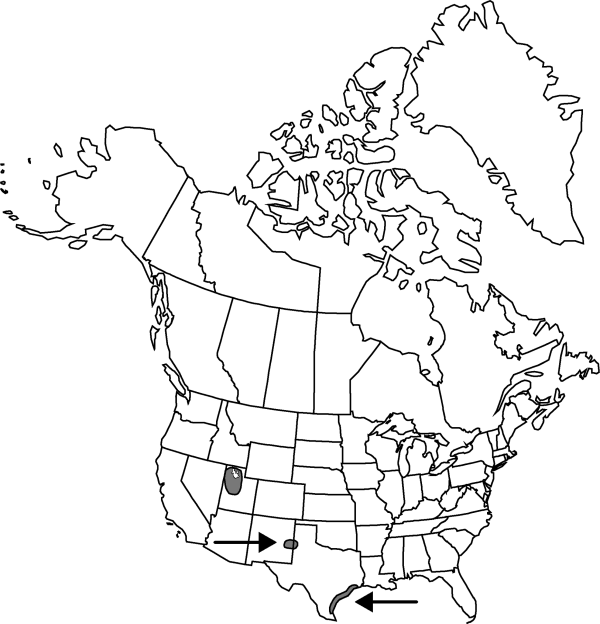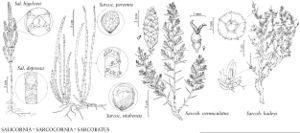Sarcocornia utahensis
Bot. J. Linn Soc. 75: 369. 1978.
Woody stems procumbent to erect, rhizomatous (rhizomes often long creeping), 10–30 cm; young branches with fleshy segments 5–20 × 2–3 mm. Terminal spikes: larger ones with 3–20 fertile segments, 10–40 mm. Fertile segments: larger 2.5–4 × 2.5–4 mm; central flowers 1.5–2.7 × 2.2–3.5 mm; anthers 0.9–1.8 mm. Seeds 1.3–1.5 mm, smooth except for straight conic papillae on edge; papillae 0.6–0.9 mm.
Phenology: Flowering late summer–early fall.
Habitat: Saline and alkaline marshes and flats, coastal marshes
Elevation: 0-1200 m
Distribution

N.Mex., Tex., Utah, Mexico (Sonora)
Discussion
Sarcocornia utahensis has also been reported from Arizona and eastern California. No specimens have been seen from these states but it might be expected to occur in both. A vegetative specimen seen from se Oregon is probably S. utahensis.
P. C. Standley (1916) reported the European species Sarcocornia fruticosa (Linnaeus) A. J. Scott [as Salicornia fruticosa Linnaeus] from Louisiana, but no specimens of this species have been seen from North America. The seeds of S. fruticosa are most similar to those of S. utahensis, so it seems possible that Standley mistook a Louisiana collection of S. utahensis for S. fruticosa. Reports of Salicornia virginica and S. perennis from the coast of Texas are mostly referable to Sarcocornia utahensis, so it is probable that S. utahensis occurs more widely on the Gulf of Mexico.
Selected References
None.
